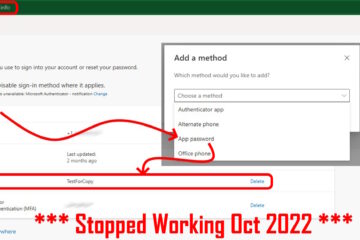As technology reshapes the increasingly competitive AV landscape, the Quote-to-Cash process bridges innovation with operational excellence.
It transforms customer preferences into tangible value by aligning marketing efforts with precise sales execution, inventory management, and financial accuracy.
But, with so many moving parts throughout the process, things can slip through the cracks causing bottlenecks and margin erosions.
In this article, we’ll delve into the significance of the QTC cycle, how it applies to AV operations, and how ERP solutions can bring unparalleled efficiency to this journey.
What Is The Quote To Cash Process?
The Quote-to-Cash (QTC) process refers to the end-to-end business process that involves generating a sales quote for a product or service and then managing that quote through to the eventual collection of payment. It encompasses several stages and activities that are integral to the sales and revenue generation cycle.
When the quote-to-cash process is siloed on different systems it can lead to inefficiencies and errors. This can impact vendor and customer relationships and ultimately lose them business.
Why Is Quote To Cash Cycle Important For AV Businesses?
In the dynamic world of Audio-Visual (AV) businesses, achieving operational efficiency and seamless customer interactions is paramount. The Quote-to-Cash process, spanning from initial customer inquiries to final payment collection, serves as a vital mechanism to attain these goals. It’s a pivotal journey that encompasses crucial stages, ensuring customer satisfaction and business growth.
It weaves together marketing, sales, operations, and finance into a cohesive customer-centric experience. This journey allows AV businesses to transcend mere transactions, fostering meaningful customer relationships.
By embracing the QTC cycle’s holistic nature, AV businesses elevate their image beyond product and service providers to become creators of memorable experiences. This process encapsulates a commitment to quality, professionalism, and efficiency. Ultimately, the QTC cycle embodies the essence of AV businesses’ aspirations in a rapidly evolving landscape, reflecting customer-centric values and operational prowess.
AV Operations: # Step Quote-To-Cash Cycle
The Quote-to-Cash cycle embodies the entire sales journey, encompassing multiple stages to effectively transition from a prospective customer’s inquiry to successfully collecting payment.
- Preparing Quote
The process starts with creating a sales quote based on customer requirements. This phase involves understanding the customer’s needs and proposing a suitable solution.
The quote contains details such as the product or service description, quantity, price, terms, and any applicable discounts or promotions. Potential clients often request quotes from multiple companies, making it a critical stage to showcase your value. - Configure, Price, Quote (CPQ)
Configuring products or services, determining pricing, and generating accurate quotes are crucial for transparent and appealing proposals. It can offer customized discounts, product configurations, or sales packages.
CPQ streamlines generating optimized sales proposals for high-touch sales or intricate products that demand enhanced customer interaction. - Craft Proposal
A proposal includes multiple quotes for supplies and labor, expectations, and the timeline. Personalizing the proposal and negotiating terms ensures alignment between the customer’s needs and the proposed solution.
Proposals complement quotes and explain cost structures, serving as a communication tool for understanding and agreement. - Contracting
Sometimes, the customer might negotiate the terms of the quote, requesting changes to pricing, quantity, or other terms. This stage involves back-and-forth communication to reach an agreement that satisfies both parties.
This can vary from simple acceptance of a quote to complex discussions for intricate sales. Clear and thorough contracting ensures alignment on terms, minimizing misunderstandings later. - Order Fulfillment
This stage involves processing and delivering the products or services to the customer. It includes activities such as order picking, packaging, shipping, and, in the case of services, scheduling and executing the service delivery.
Efficiently managing inventory, resources, and timelines for delivering products or services is central to customer satisfaction. - Invoicing
Once the products or services are delivered, an invoice is generated based on the terms specified in the quote. The invoice includes details about the total amount due, payment terms, and any applicable taxes.
Accurate and timely invoicing, reflecting the terms outlined in the proposal, helps facilitate smooth payment processing. - Payment Processing
After the customer receives the invoice, they make the payment according to the agreed-upon terms. This can involve various payment methods, such as credit card, bank transfer, or check. To improve member relations it’s crucial to focus on making it seamless as possible for the customer to pay.
After receiving payments, the funds need to be accurately allocated to the appropriate accounts or orders within the business. This step ensures that each transaction is properly accounted for, preventing discrepancies and ensuring that financial records are accurate. - Cross Selling/Upselling
The cross-selling or upselling step involves leveraging opportunities to offer additional products, services, or upgrades to customers during the sales journey. This strategic approach aims to increase the value of the transaction, enhance customer satisfaction, and maximize revenue generation.
Tailor cross-selling and upselling recommendations to the customer’s preferences and needs, showcasing your dedication to their unique requirements. Knowing your customer is key to timely and thoughtful suggestions. - Analyze Data
A holistic approach to QTC involves analyzing traditionally segmented operations, identifying inefficiencies, and strategizing improvements. During this step, you need to consolidate data and analyze metrics like churn rate, revenue, and days sales outstanding to help enhance future decision-making and process refinement.
Data collected throughout the process can also provide insights into customer preferences, operational efficiency, and revenue generation. - Make Improvements
Continuous analysis of the QTC process allows for refinements, ultimately leading to enhanced business strategies and customer interactions. No matter how long you’ve been in the industry and refined your processes, there are always opportunities to discover and weaknesses to improve.
Benefits of Automating Your Quote-To-Cash Cycle
Mundane and tedious tasks are ripe for automation. ERP software proves optimal for automating quote to cash cycle due to its ability to centralize business data in a cohesive digital ecosystem.
Points of the cycle that can benefit from automation include:
- Quoting: ERP streamlines the creation and distribution of quotes, relieving sales teams from manual compilation by automating the process and promptly sending requested quotes.
- Configure, Price, Quote (CPQ): Personalized sales approaches benefit from ERP’s capacity to customize pricing, promotions, and products using accurate data gathered from the system.
- Contracting: ERP initiates an automated order process after a purchase, integrating with online shopping portals, and orchestrating picking, packing, and shipping seamlessly.
- Invoicing: Finance management software in ERP automates invoice generation and scheduling post-order placement, bolstering on-time payments, and even tracking past-due invoices.
- Insightful Reporting: ERP’s preconfigured dashboards offer intuitive visual insights into QTC stages, eliminating the need for manual data gathering and custom report creation.
As technology continues its rapid progression, the strategic implementation of automation through ERP software enhances efficiency and customer interactions, marking a transformative shift in the QTC cycle.
Streamline Your Business From Quote To Cash With Khameleon
In the world of AV businesses, the Quote-to-Cash process is a critical junction where efficiency can make all the difference. Khameleon, an ERP solution designed for AV operations, empowers businesses to seamlessly navigate this journey, from crafting proposals to collecting payments.
By centralizing operations, automating processes, and providing actionable insights, Khameleon elevates AV businesses to new heights of operational excellence and customer satisfaction.
In a dynamic industry where time is of the essence, Khameleon transforms the QTC process from a complex endeavor to a streamlined success story. Embrace Khameleon, and simplify your Quote-to-Cash journey like never before. Request a demo today and see the power of Khameleon for yourself.





0 Comments